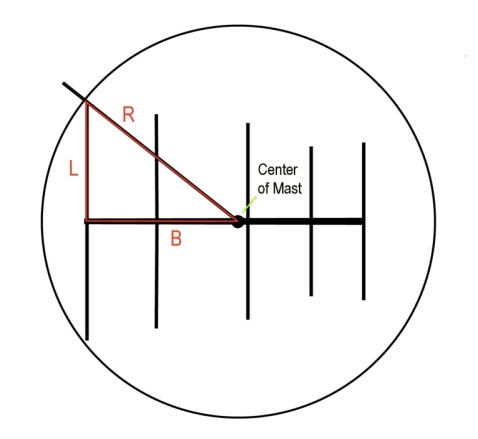There is a small bit of homework required to establish the turning radius of an antenna. You have to figure out the hypotenuse of a right triangle.
For this exercise we are using the following definitions for the formula:
R = Turning Radius
B = Boom length from center of the mast
L = Longest Element Length from Boom
The diagonal line [R] (hypotenuse) in a right triangle can be figured out using the following information:
Width of the triangle [B] would be the distance from the center of the mast to the end of the antenna boom. Note: some antennas are offset (not balanced 50/50 from the center of the mast), so the boom length on each side of the mast may be different. Choose the longest length.
The Length of the triangle [L] would be 1/2 of the longest element length (usually the rear reflector).
The formula for the hypotenuse is: [R] = Square Root of (B2 + W2)
For the following example:
The longest boom length from the center of the mast of the antenna is [B] = 15 feet.
The longest element length is 24 feet, so use half of that length which makes [L] = 12 feet
The hypotenuse [R] of the right triangle (which is the Turning Radius) would be: 19.209 feet.
(Be safe and round it up to 19.5 feet).


